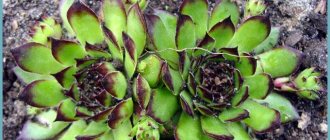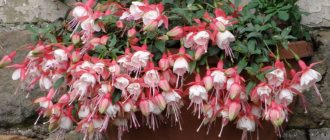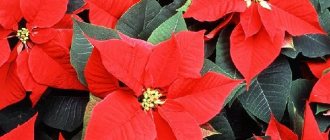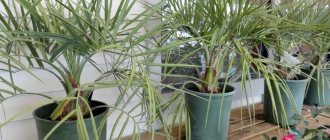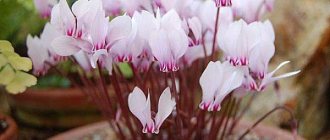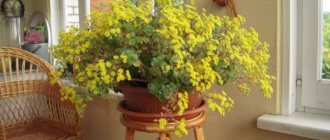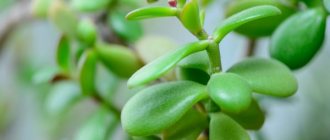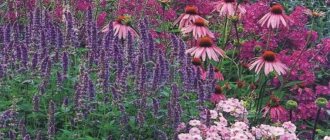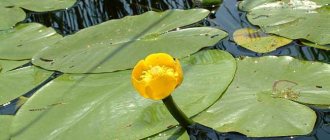Saxifraga, stone rose, hare cabbage, tenacious, crassula, thunderweed - these are all nicknames for one plant! Its main name, rejuvenated , comes from two Latin words that translate as "always alive."
This is an evergreen and beautiful plant. The leaf color is most often green . There are varieties with red leaves or a combined version.
Beliefs about saxifrage
According to one of the legends in Scandinavia, rejuvenation was the plant of the god Thor. It was often planted on the roofs of houses . People believed that this would protect the house from lightning, the ruler of which was Thor. This is where one of the names of the plant came from: rejuvenated roofing sempervivum tectorum .
In Egypt, it was believed that the plant came from the seed of the god Amun. The young man was also credited with masculine strength due to the similarity of its flower to the male organ. And in England they believed that if saxifrage bloomed in the house of an unmarried girl , then she would soon get married.
According to other legends, tincture from the plant improves vision and hearing; girls rubbed its juice for blush. Some believed that if you carry a socket with you, you will not be bitten by a scorpion .
Content
- Description
- Popular species Mountain young
- Roofing rejuvenated
- Rejuvenated cobwebby
- Young offspring
- The Russian was rejuvenated
Juvenile , stone rose, sempervivum, tenacious, hare cabbage - all these are names that refer to the same succulent plant from the Crassulaceae family.
stephen boisvert / Flickr.com
Types and varieties
Science knows more than 50 subspecies of the flower. The main ones are 12 plant species. In addition to the already mentioned roofing, there are such varieties and types with names in Latin:
- Young offspring (sempervivum soboliferum).
- Calcareous young (sempervivum calcareum).
- Rejuvenated cobwebby sempervivum arachnoideum. Spider-like shoots on reddish leaves.
- Juvenile grandiflora (sempervivum grandiflorum).
- Mpython got colder (sempervivum pittonii).
- The Russian was rejuvenated (sempervivum ruthenicum). Green leaves with red tip.
- Juvenile ball-bearing (sempervivum globiferum). Bright green rosettes with redness when young.
- Marble rejuvenated (sempervivum marmoreum). Burgundy color of the plant.
- Young young undersized or dwarf (sempervivum pumilum). Dark green color without redness.
- Rejuvenated Caucasian (sempervivum caucasicum).
- Young Wulfen (sempervivum wulfenii). Shiny green leaves with a red base.
By the way, flower growers call it Sempervivum by analogy with the Latin name.
Interesting! All types of plants are suitable for both growing at home on a windowsill and for planting in household plots! To choose the flower that suits you, look at the description and pictures for the query “rejuvenated photo”.
The most beautiful of these types: calcareous, cobwebby and marble . These varieties are most often used for growing indoors. These same species are popular with many gardeners. The plant is loved because planting and caring for it at home does not require special knowledge and skills.
It is unpretentious, there is even a joke about this: “the worse, the better.” All other types are options for open ground. The least common varieties used in floriculture are: wulfena, scion, python - the least common varieties of juveniles.
This video tells about the young plant and the features of its cultivation.
Description of the stone rose
Molodilo belongs to the Tolstyankov family. This is a succulent evergreen plant, which is popularly called the stone rose for its resemblance to a delicate flower. The scientific name is Sempervivum, which means “always alive” in Latin. This is explained by the fact that this succulent can survive in the most difficult conditions: on various soils and without water. Sockets remain fresh even after long postal shipments.
In its natural environment it grows on the outskirts of forests, rocky and dry areas. In the wild, it can be found in Asia, Northern and Eastern Europe, and the Caucasus. Thanks to its exotic appearance and hardiness, the young plant received many other names: velvet rose, tenacious, hare cabbage. There is a plant very similar to it - echeveria, which is often confused with it.
The stone rose is a rosette in the form of a ball with a diameter of 1 to 15 cm. Fleshy leaves are attached in a spiral to a short stem, which is covered with small glandular fibers. The leaf plate is elongated, pointed at the ends, with small cilia along its edge.
The surface may be waxy or covered with fluff. Thanks to the pubescence, the juveniles capture droplets of water, which helps them stay without moisture for a long time and survive in arid areas. The leaves have different colors: green, pink, red, silver, brown. Erect stems have no branches. Children are located on the elongated side shoots.
The stone rose blooms in mid-summer. Bisexual, star-shaped flowers are collected in paniculate or corymbose inflorescences. Located on a thick, fleshy peduncle growing from the center of the rosette. They can be yellow, white, red, purple and pink and have a pleasant aroma.
Juvenile has an interesting feature - the rosette blooms only once in its life after reaching the age of three for 2-2.5 months. When it fades, it dies and new shoots grow in its place.
The root system recovers quickly, so the plant can easily tolerate replanting. Withstands dry and frosty weather well. About 50 varieties of juveniles are known. The most popular ones are shown in the table.
| View | Description | Photo |
| Roofing | The plant has long been popular in Europe. It was previously used as a roofing material, which is why it got its name. The rosette is spherical, slightly flattened, reaching a height of 8 cm, a diameter of 20 cm. Pointed green leaves have red-burgundy tips. Blooms in mid to late summer season. Pink or reddish inflorescences | |
| Wulfena | Its natural habitat is the Alps. It grows at an altitude of up to 2700 m. The rosettes are 4-5 cm in diameter. The shiny green leaves have cilia along the edges and have a reddish tint at the base. The shoots are hard and elongated, with children located at the ends. On peduncles growing up to 25 cm, there are bright yellow flowers with a burgundy spot at the base. | |
| Limestone | One of the most beautiful varieties. It is distinguished by thinner, pointed leaves of a gray-green or bluish-green hue with brown or black tips. Rosettes reach 8 cm in diameter. A few flowers have a pink tint. | |
| Offspring | Grows on sandy soil in pine forests of Eastern and Northern Europe. The rosettes are in the form of a ball, reaching 5-6 cm in diameter, formed from light green leaves with a red edging and cilia along the edge. Flowering occurs in mid to late summer. Inflorescences are yellow or green. Used as a medicinal plant for heart failure and wound healing | |
| Russian | It grows in the wild in eastern Russia, Asia Minor and the Balkans. Elongated, pointed green leaves form rosettes with a diameter of 5-6 cm. Peduncles, covered with fluff, reach a height of 35 cm. Yellow flowers are collected in corymbose-shaped inflorescences | |
| Cobwebby | Rosettes up to 4 cm in diameter are covered with fluff, reminiscent of a cobweb. This feature gives the variety its name. The plant grows in the Caucasus. The green leaves have reddish-burgundy tips. Blooms with purple flowers. When grown in the garden for the winter, the rose must be placed on a loggia or balcony | |
| Marble | Leaves with white edges have greenish and pinkish streaks. With the onset of cold weather, some varieties turn red. Adult plants are smooth, while young ones are covered with light fluff. |
How to plant and propagate
Saxifraga can be planted at any time in spring, summer and autumn . It does not require any special conditions or soil. Planting and care in open ground often does not require any action from the gardener at all.
And although there are 3 ways to propagate a plant: seeds, cuttings and children, the young most often reproduces and grows on its own. That is why growing from seeds and cuttings has not taken root among gardeners.
The question of how to plant young plants can only be asked by inexperienced gardeners. 2-3 years after planting, the plant develops small rosettes - “daughters”. These rosettes are separated from the mother flower and buried at a distance of 5-7 cm from each other, as the flower grows over time. The “daughters” take root, and that’s it, it’s an independent plant!
The soil should be dry, the place should be sunny . Before planting, you can lightly water the soil so that the plant takes root and takes root.
This video explains how to propagate young plants and save the plant from rotting.
Nuances of care
Although the stone rose is considered an unpretentious plant, there are some nuances in caring for the flower:
- At home, you should not water the plant from above . Water should not get on the leaves, otherwise they may rot. In winter, watering should be reduced: once every 2 weeks is enough.
- Young people love the light . In open ground, try not to plant it in shady areas.
- Fertilizing is only necessary for domestic flowers that are more than 3 years old. In open ground there is no need to feed saxifrage at all . Typically, cow dung or bird droppings are used as fertilizer. It is diluted with water and the plant is watered with the infusion.
Juveniles calmly tolerate both drought and frost .
Succulent Sempervivum: general description of the genus Molodilo
Sempervivum, or as it is also called Molodilo (or “Stone Rose”), unites a genus of flowering crops from the Crassulaceae family. The name comes from the Latin words “semper”, which means “always” and “vivus” which means “alive”, so the plant used to be called “living”. This type of succulent is found from Morocco to Iran, also in the mountains of Iberia, the Alps, the Carpathians, the Balkans, Turkey, the northeastern part of the Sahara Desert and the Caucasus.
Photo of young in natural conditions
Representatives of this genus are fleshy bushes with drooping hairs and multi-leaf rosettes. The diameter of the leaves is up to 15 centimeters. The stems are covered with slight pubescence, the leaves are of the succulent type, usually entire, alternate. The shape is in most cases oblong, sharp or slightly pointed. The flowers are regular in shape and have a double perianth. Inflorescences corymbose-paniculate configuration. Petals are lanceolate, mostly larger in shape than the sepals.
The fruits of the crops consist of 8-20 leaflets. They are lanceolate, pubescent with characteristic hairs.
What hurts, who harms
The main disease of saxifrage is rot, which occurs due to excess moisture - the main enemy of the flower. Major pests include birds, worms and beetle larvae . If rot is detected, remove the affected areas and reduce watering - the main cause of rot.
If the plants were damaged by birds (crows, magpies, jackdaws), simply bury the flower torn out by the bird back. To prevent flying pests from causing damage to the flower, place a scarecrow in your garden . Larvae are more difficult to deal with. Because they are not visible. House flowers have no pests.
Pests, diseases and possible problems
- Pests rarely attack juveniles, but sometimes spider mites or mealybugs may appear. The plant is treated with an insecticide.
- If there is overwatering or insufficient drainage, the root and rosette may rot.
- If you poured water on the socket, it may soften and rot, starting from the middle. Most likely, the plant will die. If there are no healthy daughter rosettes, and the young are of a rare variety or species, try to root healthy leaves.
- Yellow or brown spots may be a sign of a fungal disease.
- If the young do not bloom, grow slowly and do not produce children, and if they do, it is not enough, reduce watering and increase lighting.
Bloom
2-3 years after planting, the stone rose blooms. The plant produces a peduncle. This happens in August . Different varieties have different flower colors:
- white.
- yellow,
- pink,
- red.
After flowering, the plant dies , so the age of saxifrage rarely exceeds 3 years. This is compensated by the abundance of children that grow nearby, and therefore the death of the mother plant is often unnoticeable. The peduncle must be removed after flowering if you do not plan to collect the seeds.
Winter is a period of rest for plants, both at home and in nature. At this time of year, saxifrage does not bloom or reproduce .
The healing properties of rejuvenation
The medicinal properties of the plant have been undeservedly forgotten! And quarry leaves can be used in folk medicine to prepare decoctions, ointments, and infusions. The flower has the following medicinal effects:
- anesthetic,
- disinfectant,
- healing,
- calming,
- anti-inflammatory.
Interestingly, no contraindications have been identified for taking plant-based medications. Although an allergic reaction to the components of the flower is possible, overdoses should be avoided if taken orally. Pregnant and nursing mothers should not use infusions from the plant .
It is not recommended to give to children under three years of age. Important! There are no toxic components in the composition of saxifrage.
Medicines from rejuvenate are used for the following diseases:
- stomach ulcer, gastritis,
- women's pain,
- skin problems,
- heat.
- inflammation in the oral cavity ,
- cardiovascular problems,
- epilepsy,
- diseases of the eyes and ears.
To prepare ointments, you need to take the leaves of the flower, crush them and apply the pulp to the sore spot : a wound, callus, wart, blister from an insect bite.
Juvenile juice whitens the skin and removes freckles and age spots. A decoction of the leaves is used to rinse the mouth if there are wounds or taken orally to treat ulcers. The decoction is also used to remove worms and treat hemorrhoids.
Advice! Despite the abundance of beneficial properties, you should use medicines from the plant with caution, and be sure to consult your doctor before use!
